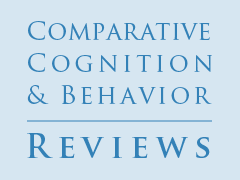Challenges Facing Contemporary Associative Approaches to Acquired Behavior
by Ralph R. Miller,
State University of New York at Binghamton
Reading Options:
Download/Read PDF | Add to Endnote
Abstract
Despite the considerable success of contemporary associative models of learning in stimulating new behavioral research and modest success in providing direction to both neuroscience and psychotherapy, these models are confronted with at least three challenges. The first challenge is to the assumption that animals encode only one or a few summary statistics to capture what has been experienced over many training trials. This assumption is contrary to overwhelming evidence that the brain retains episodic information. The second challenge is that the learning-performance distinction has been largely ignored. Most models erroneously assume that behavior is a nearly perfect reflection of what has been encoded. The third challenge is to account for interactions between stimuli that have been presented separately (e.g., stimulus interference) as well as between stimuli that have been presented together (e.g., stimulus competition).
Miller, R. R. (2006). Challenges Facing Contemporary Associative Approaches to Acquired Behavior. Comparative Cognition & Behavior Reviews, 1, 77-93. Retrieved from http://comparative-cognition-and-behavior-reviews.org/ doi:10.3819/ccbr.2008.10005
